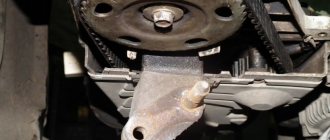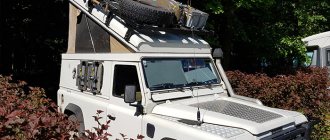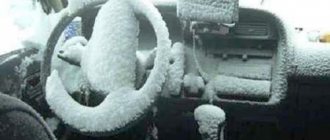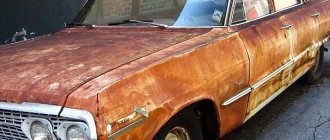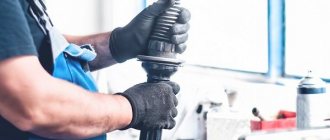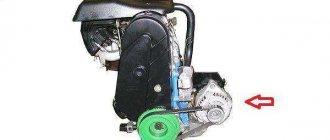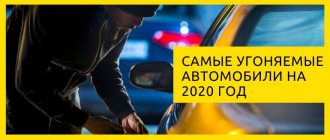Repair work on a car body cannot be done without a modern straightening tool. Whether it’s correcting a minor deformation in a garage or a major restoration of serious damage in a workshop, only special equipment and consumables will help solve the problem efficiently. There is a wide range of tools for car body repair on the market, both in sets and as individual devices.
Straightening stand - the basis for repairs
In workshop conditions, a mandatory equipment of the work site is a stand or a slipway. This is a platform on which the car is placed, thus providing convenient access to work surfaces. As for the direct functional purpose, the stand allows you to correct serious body deformations through force loading.
The unit may have different characteristics, the main one of which is the maximum weight load. The average body repair slipway accepts vehicles from 2 to 2.5 tons. This is an acceptable value for sedans and hatchbacks. However, SUVs and especially minibuses with such a platform cannot be repaired. For such tasks, you will need a stand with a lifting capacity of 3 tons. The type of power mechanism due to which the working action is carried out also deserves special attention.
Purpose and classification
The reverse hammer is designed to level out small dents that are not directly accessible from the back side on parts such as sills, arches and pillars.
It should be borne in mind that the tools in question are not suitable for processing large body parts, such as the roof, hood and trunk lid.
In addition, only small dents can be removed using reverse hammers. In the case, for example, of a violation of the body geometry, other repair technologies will be required.
Reverse hammers are classified into four types:
- vacuum;
- spotters;
- with two and three weights;
- with pneumatic mechanism.
The type of tool determines the technology for performing straightening work. In the case of using the last three types of reverse hammers, it is first necessary to completely remove the paint and varnish material from the surface of the body part being processed by grinding. The difference between a vacuum tool is that it is used without removing the paintwork, without damaging it or compromising its integrity.
Stand drive type
Classic stocks are equipped with hydraulic drives that are controlled by manual force. That is, after fixing the car, the operator presses the handle and thereby helps to pull the body. Obviously, this method of influence has limitations due to the physical characteristics of the master. Therefore, today pneumohydraulic drives and automated mechanisms are increasingly used.
Pneumohydraulics have foot control, which increases the load potential by connecting a compressor. In turn, an automated building for body repair does not require operator participation in the work process. The user only needs to control the operation through a special control panel. For comparison, if standard hydraulic stands provide a maximum force in the range of 1-3 tons, then pneumohydraulic and automated systems correct the shape of the body under pressure up to 10 tons.
Impact blades and spoons as body tools
If you need to pull out metal and make it even, special spoons that are designed for this will help you. It happens that there is no way to get to the back of the part at all.
What then? Then spoons will help you out again. The shape of such a spoon depends on the shape of the object itself. See if you have taken everything into account. For example, will she get to the right place or not. Or it will be possible to unfold it to carry out straightening. It is also important why you are going to use the spoon at all: do you need a punch or straightening?
But roof repair is a simple procedure. Here you can get by with an ordinary spoon, without frills or pretensions. That is, without bends. If you are afraid for the spar, then get a lining that will protect it from damage by the tool.
By the way, the pressure during stretching can also damage it, so it’s better to really put it out of harm’s way. You need to be careful here. When you pull the metal out the top, give it a good tap on the bumps, otherwise you will never straighten the part.
backing stamps
Equipment for straightening cars also includes spoons for internal straightening. Of course, everyone knows that a car door is two halves, fastened together by the will of the designer. So, for straightening to go smoothly, remove the door.
Remove it from its hinges and place it on a workbench, table, in short, any hard surface. But this surface should not scratch, otherwise you will not be able to straighten without painting. As a last resort, place a stack of newspapers under the door. Don't be lazy to remove the door. This will give you more room to bend and straighten a particularly tricky area.
So, you have completed your first mission, namely, roughly straightened and leveled the part. It's time to turn your spoon around so that it also does straightening at the same time. Double benefit!
It so happens that you just can’t get into some area of the part. Then you need a stamp with a long handle. To be honest, this straightening tool may not be used. You just need to drill the holes.
Technological holes, to be more precise. But don't worry, they won't be visible, you drilled them from the inside. I hope it’s really from the inside, otherwise you’ll have to putty.
There are also spoons that are needed to separate the frame from the outer panels. They are also often used when it is necessary to eliminate the results of compression. You simply insert your tool into the hole between the panel and the frame, and then move it in different directions.
And so on until the details come apart - everything is simple. Using such a tool, you can achieve great results with your own hands. Its blade can also be used for lining if you need to straighten the panel.
Stand equipment
The slipway platform itself, without functional organs, will be of little help in the process of straightening activities. The list of its executive units includes exhaust units, steles, jacks, winches and other devices. All of them are necessary in certain situations.
For example, with the help of a stele, the upper surfaces of the body are drawn out. You cannot do without this mechanism if you need to work with an overturned car whose roof is damaged. Conversely, the exhaust unit works effectively with bottoms. Requires connection of working parts and the process of placing the machine on the platform. Such activities involve a winch, a jack and a body work grip in the form of a vice for the thresholds.
It is important to emphasize that not only the stand is selected for the specific characteristics of the target car, but also functional units. The same jack and winch have their own lifting capacity limits, which must be taken into account.
Grinding of body parts
Tool for grinding body parts
A conventional electric drill is very often used in the form of a grinding device. For this purpose, a special steel rod that has a thread is clamped into the chuck of an electric drill. After this, a disc made of very hard rubber is fixed on it. The thickness of this disk is about 10-15 millimeters.
A circle made from a piece of sandpaper is attached to the disk. It is very easy to make such a device yourself. The rubber and emery wheel must be secured to the rod using two nuts and washers.
In addition to all of the above, you can use shoe sanders. These sanders are very effective tools for leveling large flat areas. If you do not have a sanding machine or an electric drill at hand, then you can sand the surface of the body manually using ordinary sheet sandpaper. To make it convenient for you to work, you can stretch this sheet skin onto any wooden block or onto a piece of fairly hard rubber. This is necessary so that during work it is possible to produce an even and high-quality grinding of the body.
Hand straightening tool
If stocks are more likely to be professional equipment for straightening in auto repair shops, then hand tools are affordable both in price and in their working capabilities for the average car enthusiast. The most common means of correcting minor defects is a hammer, which, by tapping lightly, removes minor damage.
But your choice should be approached responsibly so as not to aggravate the problem. It is advisable to have several hammers of different shapes on hand and always models with rubber backing. It wouldn’t hurt to have hydraulic tools for body repair, which are represented by pneumatic stretchers and pumps. These are compact devices that require minimal effort on the part of the performer, but at the same time effectively affect the deformed area. Also in the garage you should provide a group of metalworking tools that will allow you to perform auxiliary tasks when working with body metal.
Hammers and mallets for body work
Straightening hammers differ significantly from conventional construction hammers, which we are well familiar with. One of the significant differences is the main working striker, which is made somewhat rounded and very carefully and accurately polished. The next difference is the side opposite the main working one, as it has a peculiar “beak” shape.
You can make a set of similar hammers yourself. And heavy tools are practically not used in straightening work, since generally the weight of one tool is about two hundred grams.
In addition, today hammers that are made of non-ferrous metal or an alloy of metals are very widespread. For example, these are copper, brass, and aluminum hammers. Plastic and textolite hammers are also very often used. Such strikers deform the surface of the body much less. And if during straightening it is necessary to preserve the paint layer of the body, then only rubber hammers are used.
There are four main types of hammers that are used in straightening work:
- A special hammer for rolling out or straightening;
- Embossed analogue;
- Inertia Hammer;
- Devices for bending flanges.
Straightening hammer
Hammers and mallets for body work
Straightening hammers are perhaps the main tool used for drifting and final straightening. These hammers can come in various shapes. It is necessary to take into account that the firing pin must be carefully placed on the neck of the handle, so that it is absolutely motionless. And the handle auger should be free of burrs and any cracks.
It is not recommended to make the handle for this tool excessively thick. This is justified by the fact that during operation it should spring well. It is also recommended that one side of the striker be made round and the opposite side made flat and square.
Embossing hammer
The embossing hammer has the shape of a kind of blunt cone. The meaning of this hammer is the final rollout.
Inertia Hammer
Inertial devices are necessary in order to extract hard-to-reach defects due to their working part hitting a special limiter - a bumper. To work, you need to have a set of similar attachments.
Flange Hammer
The flange hammer is equipped with two feathers that are rotated ninety degrees.
Mallets
Now about what concerns mallets. Their heads are mainly made of very hard wood, and the handle is made of ash. An ordinary mallet, which has a round shape, is equipped with a cylindrical striker. And today such straightening tools are made of rubber, soft materials or rawhide.
Rubber mallets, which have replaceable strikers, are very well suited, for example, for straightening aluminum. They can also be used for repairing or straightening steel.
Composition of the universal tool set
In order not to search through the assortments of different manufacturers for individual devices for working with the body, you can simply purchase a ready-made kit for straightening car surfaces. The standard kit usually includes the same hydraulic pumps, supplemented by cylinders, adapters and shaped nozzles. Special plates are provided for impact action. They also complement the basic equipment.
A professional set of tools for body repair, in turn, will include fully equipped stocks. Such packages may also contain separate kits for performing welding operations.
Application
The process of straightening with your own hands using a reverse hammer is performed in the following order:
- First of all, you need to clean and degrease the work surface.
- Then the paint coating is removed from it by sanding.
- Round repair washers are welded onto the treated area of the body.
- Next, attach the supplied metal hook to the end of the reverse hammer.
- They cling to the puck and, holding the weight with one hand and the handle with the other, direct the first to the second with sharp movements. In this case, the surface of the body part is leveled. It must be taken into account that the force of the blows directly determines the speed of leveling.
Dents lead to the formation of internal compressive and tensile stresses, which can change unpredictably during straightening. For its successful implementation, it is very important to determine the nature of the defect. For example, when removing a dent located in the central part of a body part by pulling, new defects may form.
Therefore, during the straightening process, it is necessary to control changes in the dent being corrected and, in order to avoid the formation of new defects, carry out it from the edges to the middle of the defect in a circle.
If the work is done correctly, the surface will return to its original shape and the deformation stress will be eliminated.
Consumables and accessories
Body straightening only rarely occurs without damaging the paintwork. Therefore, as part of such activities, you should also use means of stripping, grinding and priming the exposed metal surface. For such needs, manufacturers offer automotive protective coatings, thanks to which the surface does not corrode until the damaged area is completely repainted.
It should also be taken into account that a tool for hydraulic car body repair may involve connecting a compressor unit with adapters and a generator. This should also be taken care of in advance by selecting equipment specifically for the characteristics of a particular tool.
What is body straightening
Straightening is a type of body repair work aimed at correcting mechanically damaged parts of the body, removing dents, restoring geometry and giving them their original appearance.
The metal of body parts has three main characteristics: elasticity, rigidity and ductility. Elasticity means the ability to return to its original state when stress is removed. Plasticity is the very quality thanks to which metal can be given the desired shape. When the force on the metal is exceeded, that is, when the permissible limit of its elasticity is exceeded, its molecules deform. In the future, the place of this deformation is not able to return to its original state on its own. At the factory, during stamping, the metal receives similar hardening to maintain the desired lines and shapes. This property is called stiffness.
To correctly assess the amount of work to be done, you need to know the damage characteristics of the material. There are direct and indirect damage to the metal. In the case of direct damage, the damage caused may damage the paintwork or tear the metal at the point of impact. With indirect, deformation occurs in the area adjacent to the impact site. In some cases, it may be some distance from the area of direct damage.
When choosing a restoration method, the location of the damage and its accessibility from the inside are taken into account. In open access, only a hammer and support are used. If the impact area is located inconveniently for repair manipulations, a vacuum suction cup, spotter, and adhesive system can be used for pulling and subsequent adjustment.
The main principle in auto body repair is its simplicity. If possible, it is better not to use special equipment so as not to expose the metal to unnecessary impact. Currently, thin and elastic alloy is used for parts, which makes it possible to correct small dents with just manual force.
Nuances of choice
There is no point in selecting a tool for its intended purpose. After all, it is impossible to predict how and with what severity the damage will occur. It is recommended to have a complete body restoration kit in the garage, which is, in principle, available for work in specific conditions.
The main attention in choosing should be paid to the manufacturer and characteristics of the tools. Reliable manufacturers include Santool, Kraftool, Trommelberg and Matrix. This tool for car body repair is distinguished by high-quality materials, durability and functionality. It is also not cheap, but it will not let you down when performing important operations.
As for the characteristics, they must correspond to the body parameters of the target car. The thickness of the metal, body dimensions, geometric configuration, etc. are taken into account.
Hooks and levers for straightening
Hooks are indispensable tools needed to remove excess elements that are hidden under the body trim. Using a hook, you can remove ribs and stiffening strips, stampings and other parts that prevent the body from being restored independently. The hook is placed between the sheathing and the part, after which it is slowly and carefully pulled out. If it is not possible to reach the location of the interfering elements using a hook, levers are used. In a garage setting, these are usually homemade tools for car repairs, but they can also be purchased at a car store.
What do you need to make a reverse hammer with your own hands?
Body repair is a complex operation that requires certain knowledge, special tools and equipment. One such device is a reverse hammer. This is a simple tool that is easy to make with your own hands. There are many photos and videos for this on the Internet. You can also download a drawing of the simplest version of the device.
Action
This device is used to level minor areas on deformed cars after minor accidents.
There are areas of the body that can be leveled using a simple rubber hammer, performing reverse blows. However, such access to most surfaces
does not exist. This is why you need a reverse hammer. The tip of the hammer is attached to the deformation site. Using a weight at the opposite end, a jerky pulling force is applied to the surface.
Before you start making a reverse hammer for body repair with your own hands, you will need to understand how this tool works and what types of it exist. It is also recommended to make a drawing. And only after that you need to start working.
How to use
The operating principle of the reverse hammer is as follows:
- First of all, you should inspect the damaged area of the car, select the appropriate hook based on the location and main dimensions of the dent, in order to then correctly calculate the accuracy of the applied force.
- Then the repaired area of the body surface must be thoroughly cleaned from excess paint layer and primer down to the metal.
- Next, you need to weld special repair brackets (washers) onto the metal surface of the dent using a welding machine.
If the electric spotter comes complete with a reverse hammer, then during the leveling process you only need to change the nozzle. - Then you need to hook the hook of the auto tool onto the brackets, and then begin to pull out the dent with gentle and light blows.
- It is recommended to perform leveling until the damaged part of the body surface is completely eliminated
. - To get rid of dents on your car, you first need to weld some brackets and push a hammer through their holes to remove the damage.
- After which the corrected surface defect should be treated with a primer and re-coated with paint to match the body.
Good to know:
A body work reverse hammer is one of the most important tools designed to remove irregularities in hard-to-reach areas of the car.
However, it is worth paying attention to the fact that such a device has its drawbacks, due to which, along with the dent on the car body, a layer of paint that was not even damaged is completely removed. In addition, areas of extensive dents in the hood, roof and surface of the trunk of a car cannot be straightened with its help. Welding staples can greatly deform the metal, which will ultimately lead to a complete replacement of the part.
Self-production
The finished tool is not cheap, so in order to save money, many motorists construct the device with their own hands. To create it yourself you will need:
- Metal steel rod (or pipe) 50 cm long and 2 cm thick.
- Rubber or ebonite handle.
- Stainless steel hook with a thickness of 4-5 mm.
- Welding machine.
- Two steel washers with a diameter of 2.5-3 cm.
- A weight 6 cm thick and 16-17 cm long.
